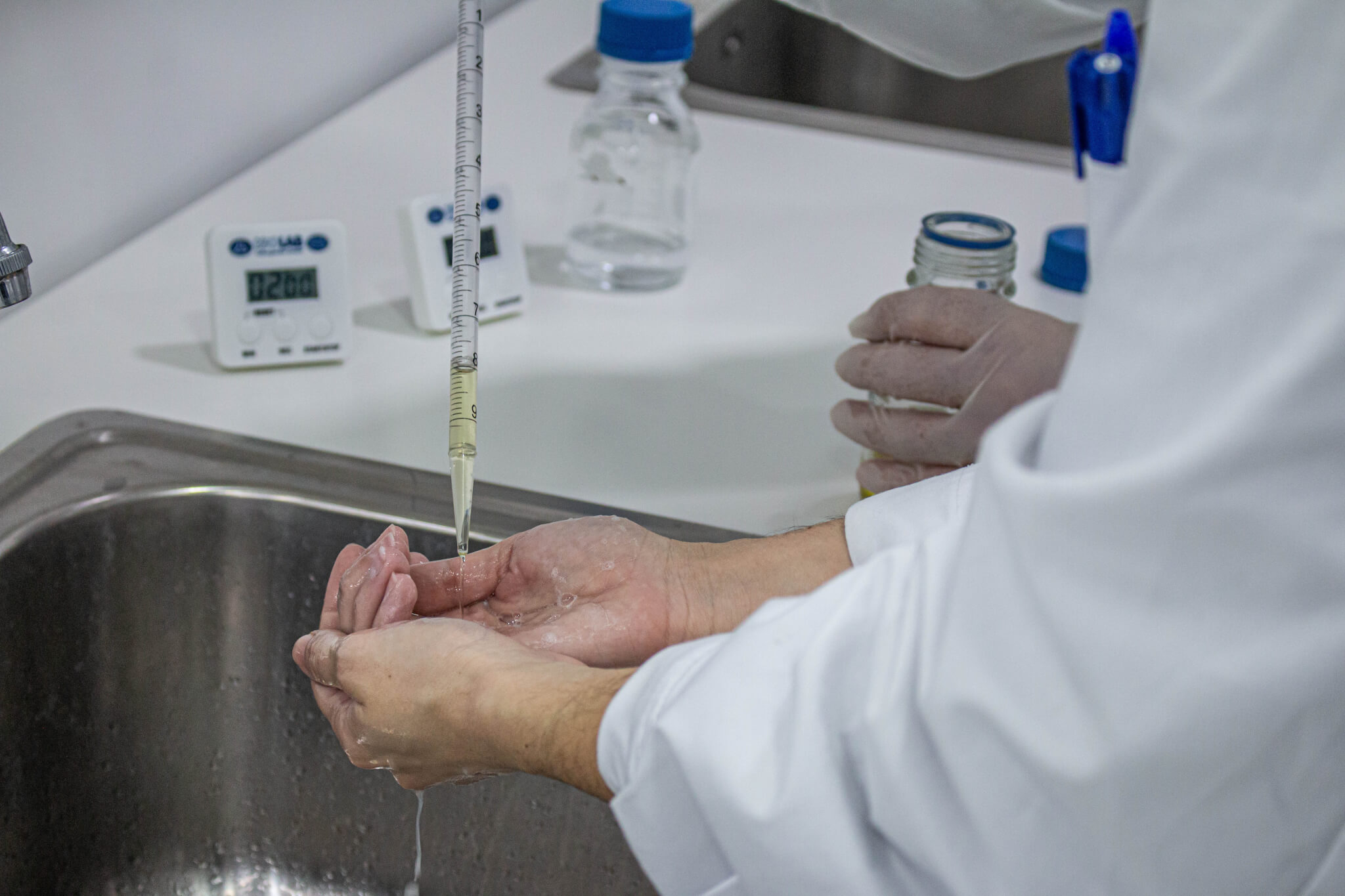Residual Effectiveness of Cleansing Products
QACS provides Residual Effectiveness of Antibacterial Personal Cleansing Products to demonstrate the effectiveness of antibacterial personal cleansing and disinfectant products both immediately and after prolonged exposure, for the substantiation of the relevant claim. More specifically, the following Protocols can be applied:
ASTM E2752: Standard Guide for Evaluation of Residual Effectiveness
This test is conducted on a panel of healthy adult participants. Every participant is tested at two test areas. Each test areas, usually forearms, are washed multiple times with the product under test and a vehicle or control formulation. After the washing procedure, the test areas are inoculated with a marker micro-organism (usually Staphylococcus aureus or Escherichia coli) and occluded for a specified period of time, after which, the test areas are sampled and enumerated for the marker micro-organism. Activity of the product under test is measured by comparing microbial counts from treated areas to those derived from the areas treated with vehicle/control formulation or to an untreated baseline organism count.
Tailor made protocols based on European Normatives EN 1499, EN 1500 & EN12791
This approach involves applying either live test organisms (Escherichia coli K12) to the hands of healthy adult volunteers or use the present transient microbial flora of hands.
Initially, the micro-organisms present on hands are recovered, to obtain a baseline count. The test or reference disinfectant product is then applied to the hands, according to instructions of product’s label. Immediately after wash procedure and drying, the remaining flora of one hand is enumerated and the other hand is protected from extraneous contamination by donning a sterile surgical glove to be removed after 2-3 h. The procedure is repeated with the product under test. The following samples are taken from the hands, for enumeration of bacterial counts:
- immediately after the handrub or –wash procedure; for immediate effect
- 2-3 h after the handrub or –wash procedure; for sustained/for residual effect
The organisms are enumerated, counts transposed to the Log system and the difference between the numbers recovered from the test or reference, and baseline counts are established and statistically analyzed.
QACS performs Residual Sanitizing activity tests for biocidal products. Tests check the Residual Sanitizing efficacy of dried chemical residues on hard and Non-Porous Surfaces (EPA 01-1A) and Residual Αntimicrobial efficacy on non-porous surfaces (PAS 2424-2014).
ISO 20743:2021 is a quantitative test method to determine the antibacterial activity of all antibacterial textile products including nonwovens. This method is applicable to all textile products, including cloth, wadding, thread and material for clothing, bedclothes, home furnishings and miscellaneous goods, regardless of the type of antibacterial agent used (organic, inorganic, natural or man-made) or the method of application (built-in, after treatment or grafting).
Based on the intended application and on the environment in which the textile product is to be used, and on the surface properties of the textile properties, the standard describes three inoculation methods to choose from:
- absorption method (an evaluation method in which the test bacterial suspension is inoculated directly onto specimens);
- transfer method (an evaluation method in which test bacteria are placed on an agar plate and transferred onto specimens);
- printing method (an evaluation method in which test bacteria are placed on a filter and printed onto specimens).
The antibacterial activity is checked against the microorganisms: Staphylococcus aureus and Klebsiella pneumoniae or other strains based on product’s label claims and intended use.
The test results are expressed in terms of antibacterial activity value, which is calculated as the log difference between the numbers of bacteria, obtained from the antibacterial testing specimens immediately after inoculation and after an 18 h to 24 h incubation period. Each test includes three independent replicates of the experiment to demonstrate repeatability of results.
In order to ensure the safety of our volunteers, the above services are applicable for products which have been met the criteria of EN 1499, EN 1500 or EN 12791.

